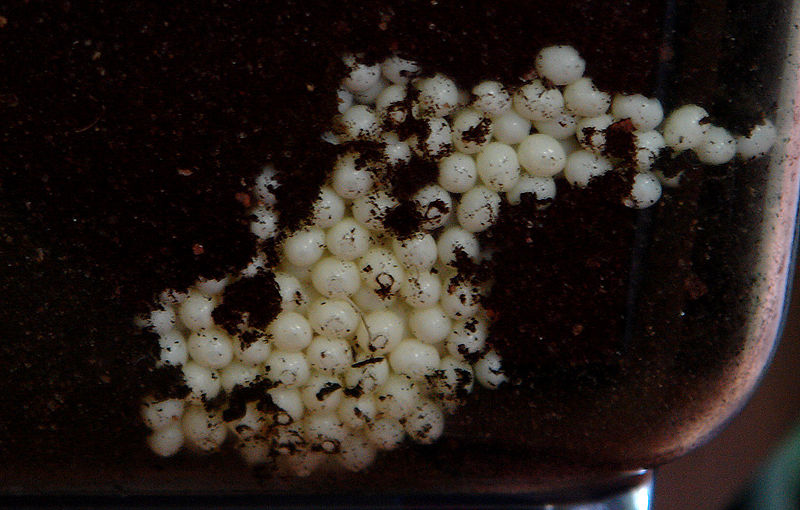Reproduction
Most land snails do not travel long distances over their lifetime so they may never find a suitable partner. One way they overcome this problem is that land snails are hermaphroditic. This means that they have both male and female reproductive organs such as testes, sperm and penis, ovaries, eggs, an oviduct, and a sperm receptacle that is used for storing sperm from a partner (Dourson et al. 2006). Since land snails have both sets of sex organs, self fertilization is possible but rare (Dourson et al. 2006). In order to prevent self fertilization, snails exchange bundles of sperm called spermatophores which are injected into a snail (Hickman et al. 2009). If a land snail was able to find a suitable partner, copulation may occur. A snail may even release a dart of calcium carbonate covered in mucus into its mate (Hickman et al. 2009). A snail may be shot by these love darts by a few other snails, so the snail possesses the ability to select which love dart it wants to use to reproduce (Hickman et al. 2009).
Inflectarius kalminaus has a long and slender penis measuring 7mm with a small fleshy body in the upper end (Hubricht, 1965). The vagina is short, only measuring 0.3 mm (Hubricht, 1965). The spermatheca, which is used for storing sperm, is twice as long as it is wide and measures 1mm (Hubricht, 1965).
 Inflectarius
kalmianus undergoes direct development which
means that the juvenile hatches directly from the
egg, and they do not pass through a larval stage
(Hickman et al. 2009). In land snails, these laid eggs can
be found in various places such as under logs and in
deep moist leaf litter, mainly in moist ground (Dourson
et al. 2006). Since land snails do not have
the ability to hear, they do not make sounds to call
out to each other during courting. Instead, they use
their sense of touch in their courting rituals. They
may even cover each other in slime that they produce
before mating (Snail World,
2006).
Inflectarius
kalmianus undergoes direct development which
means that the juvenile hatches directly from the
egg, and they do not pass through a larval stage
(Hickman et al. 2009). In land snails, these laid eggs can
be found in various places such as under logs and in
deep moist leaf litter, mainly in moist ground (Dourson
et al. 2006). Since land snails do not have
the ability to hear, they do not make sounds to call
out to each other during courting. Instead, they use
their sense of touch in their courting rituals. They
may even cover each other in slime that they produce
before mating (Snail World,
2006).
For more information on the reproductive life cycle of a land snail, please click here: http://www.snail-world.com/Life-Cycle-of-a-Snail.html
To learn about the people who created this site click here or return to the homepage.